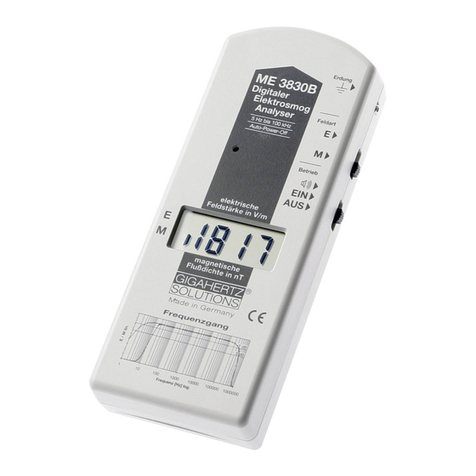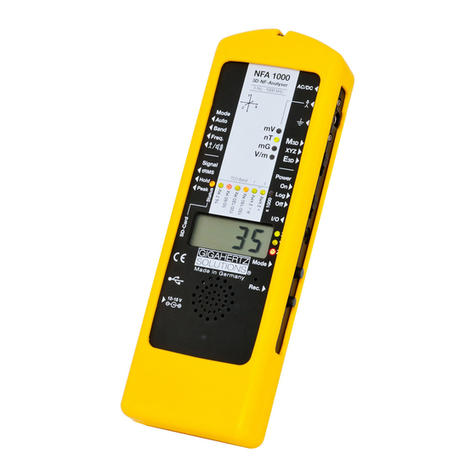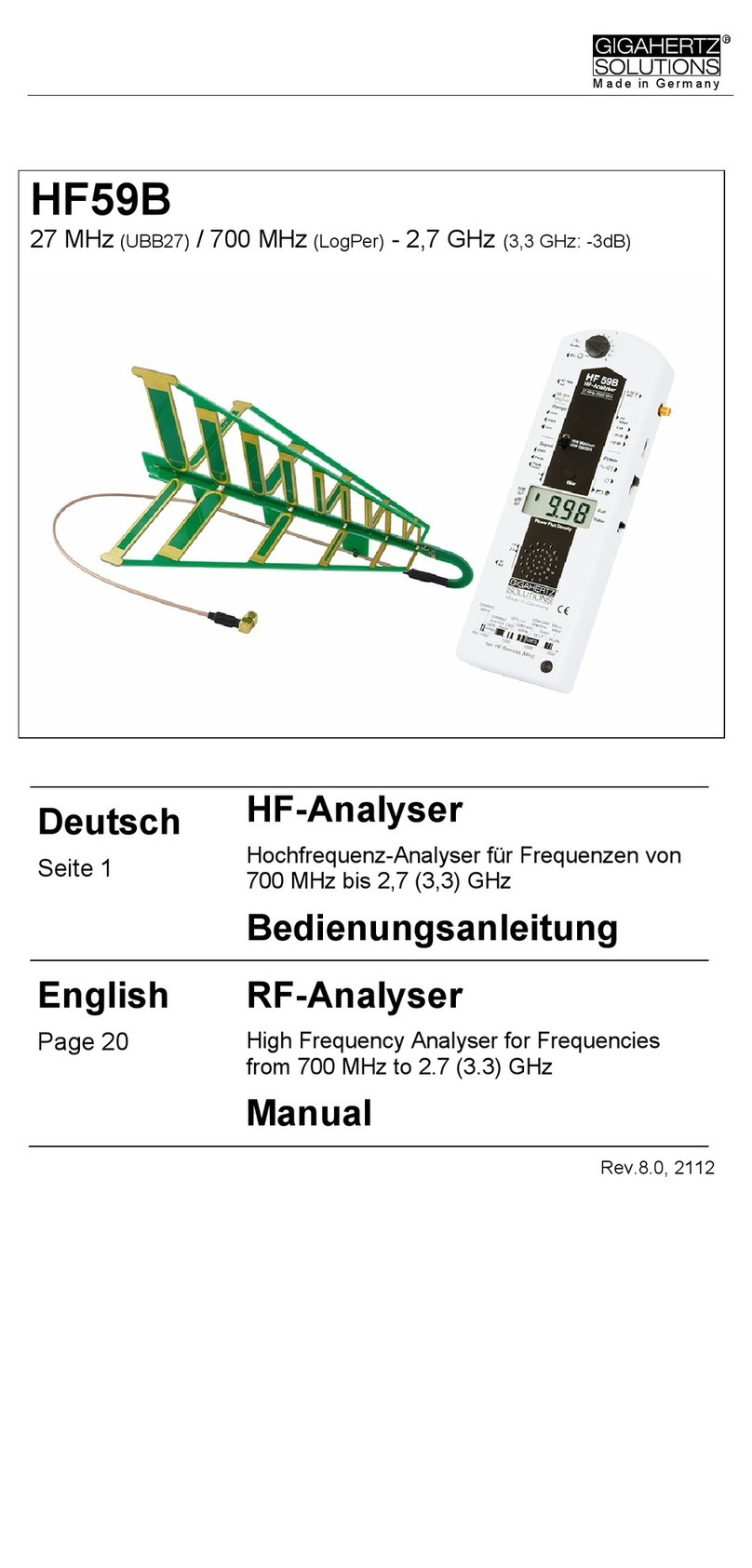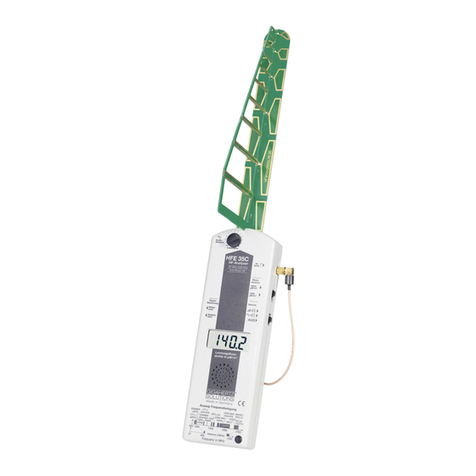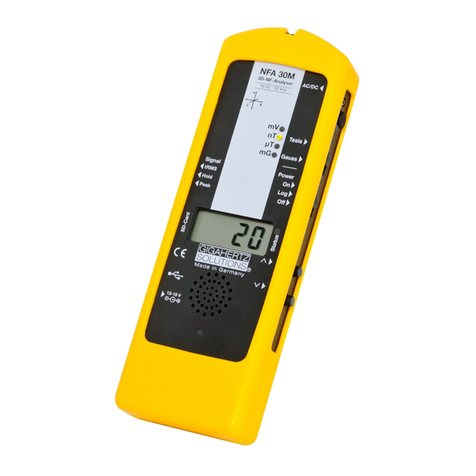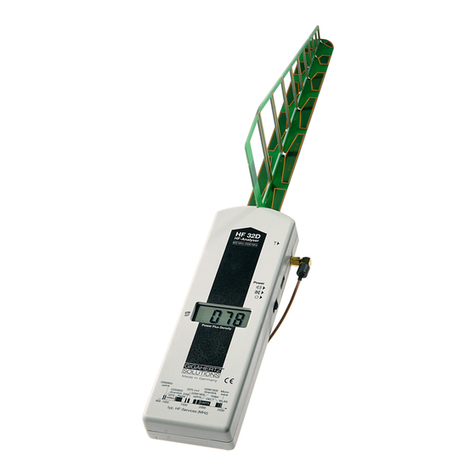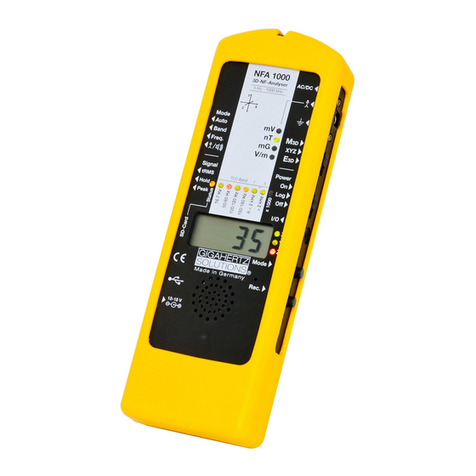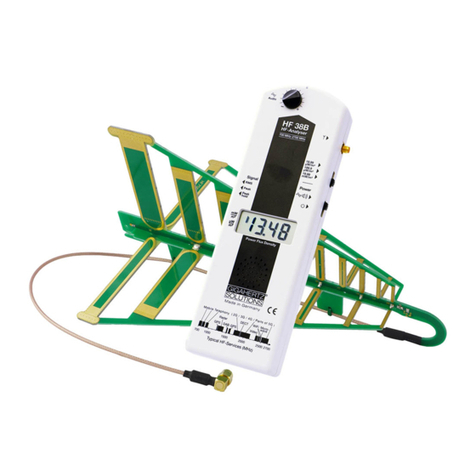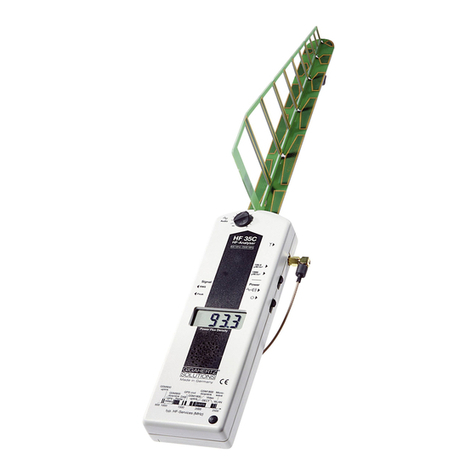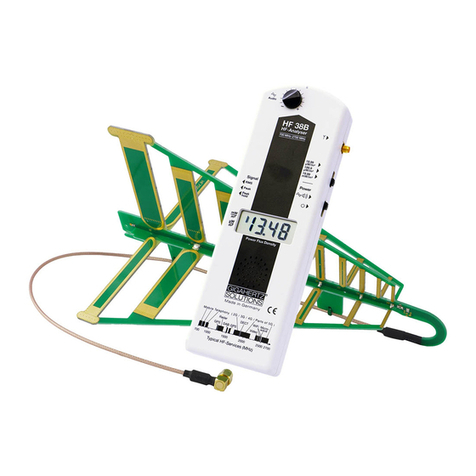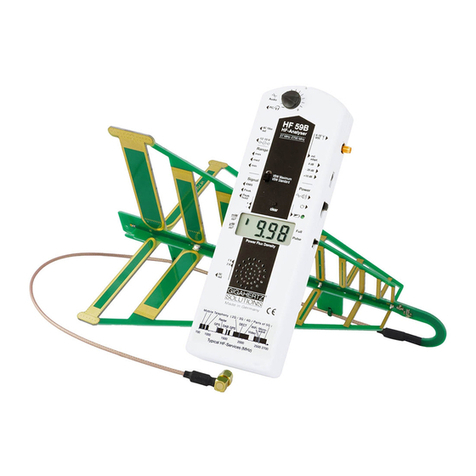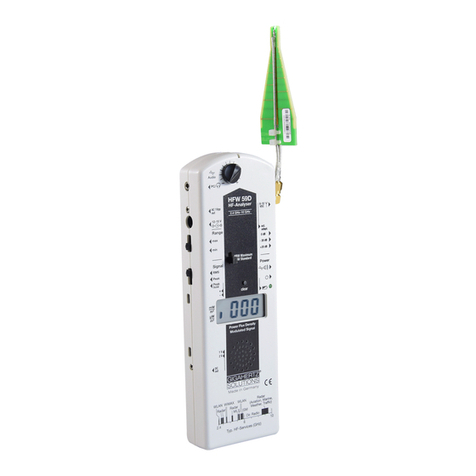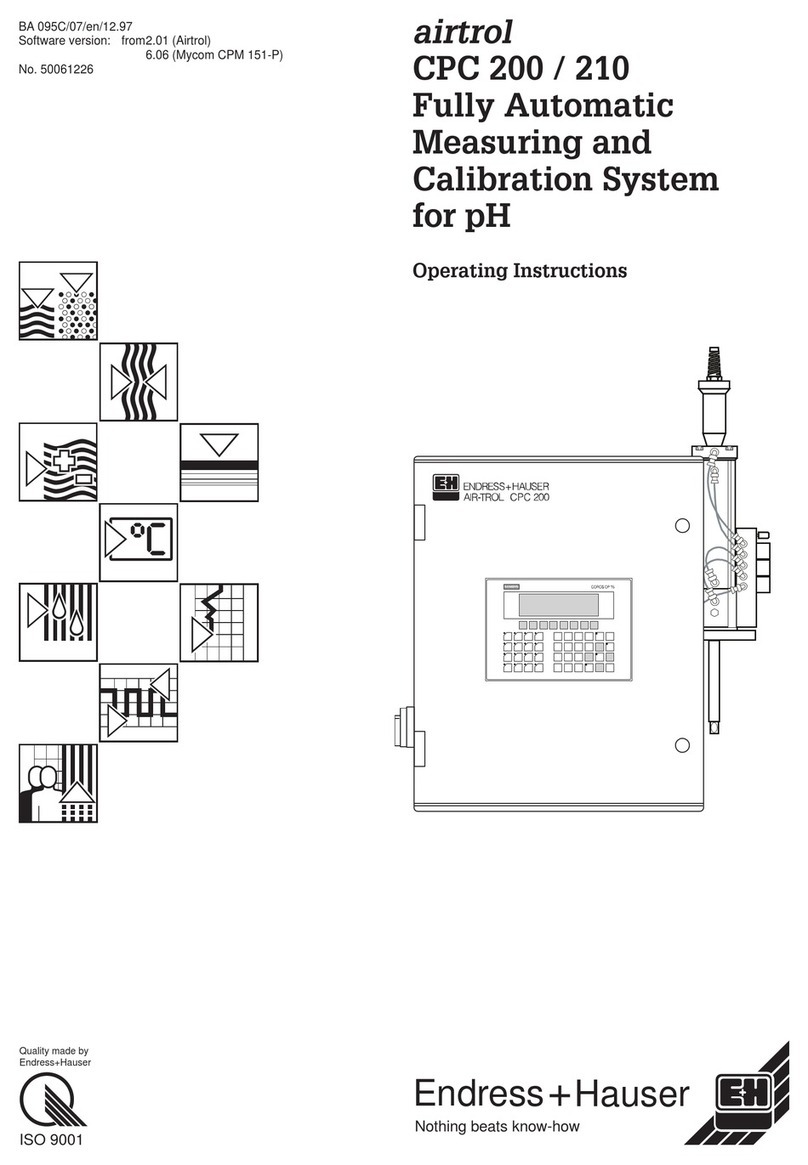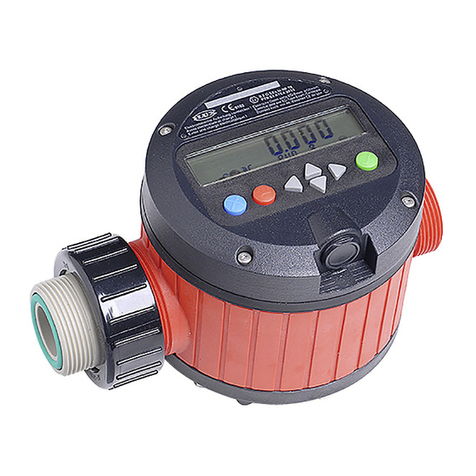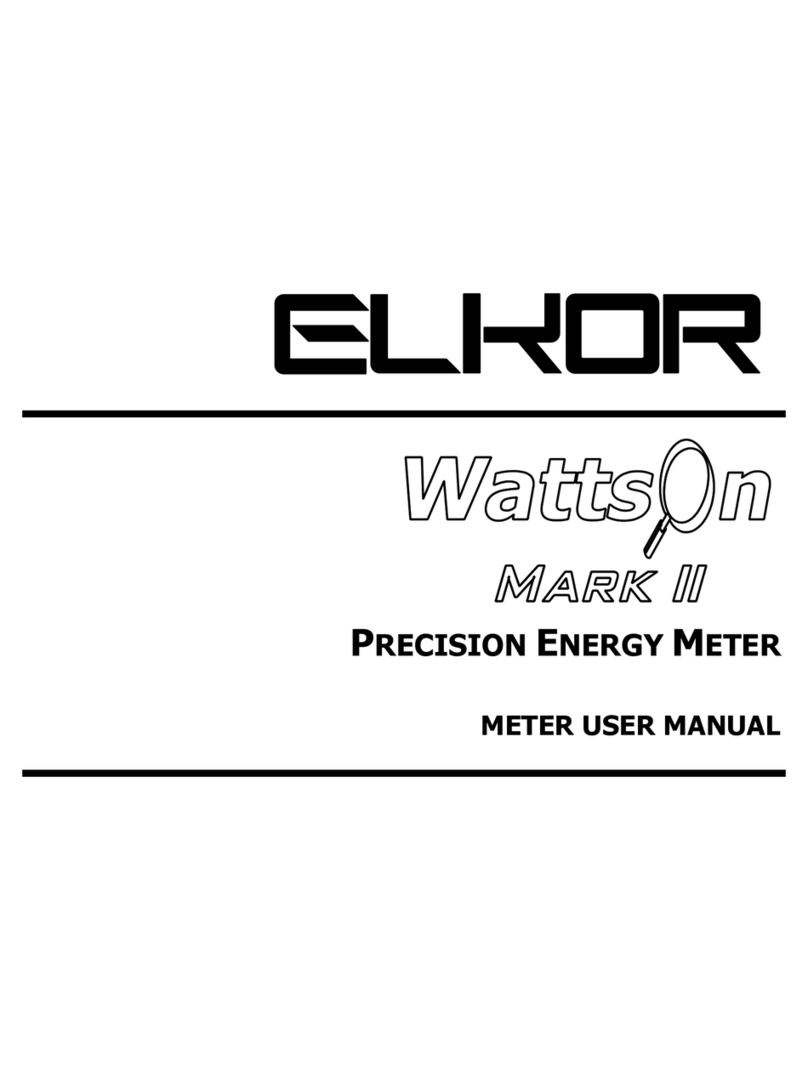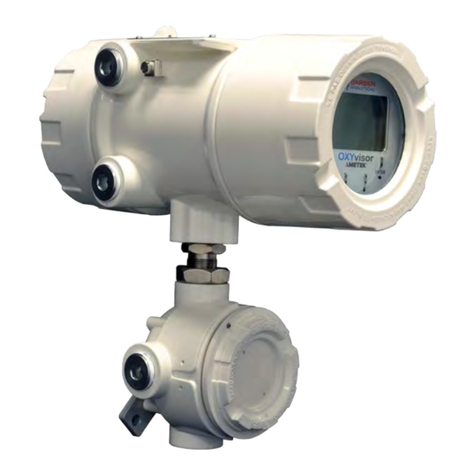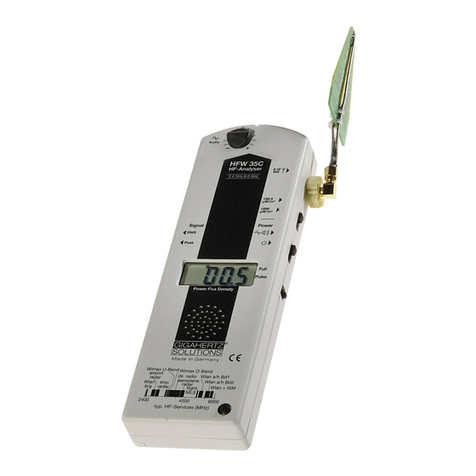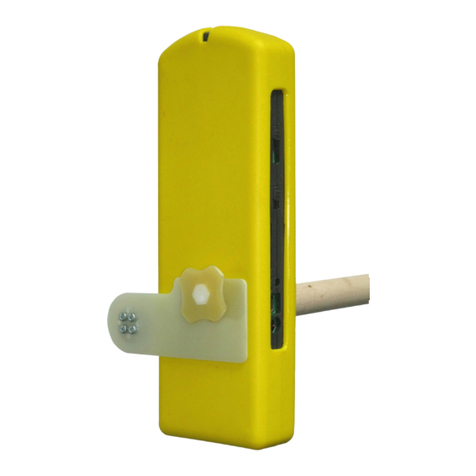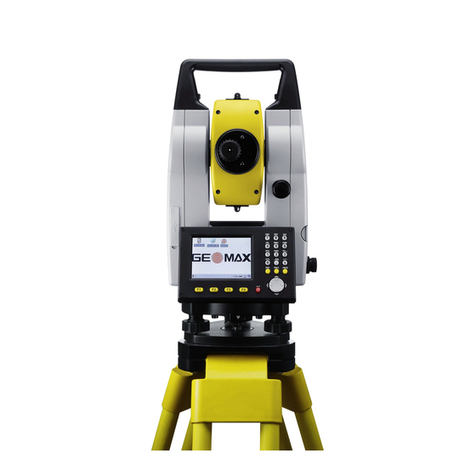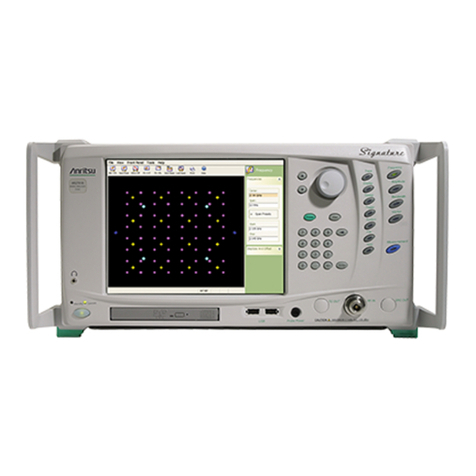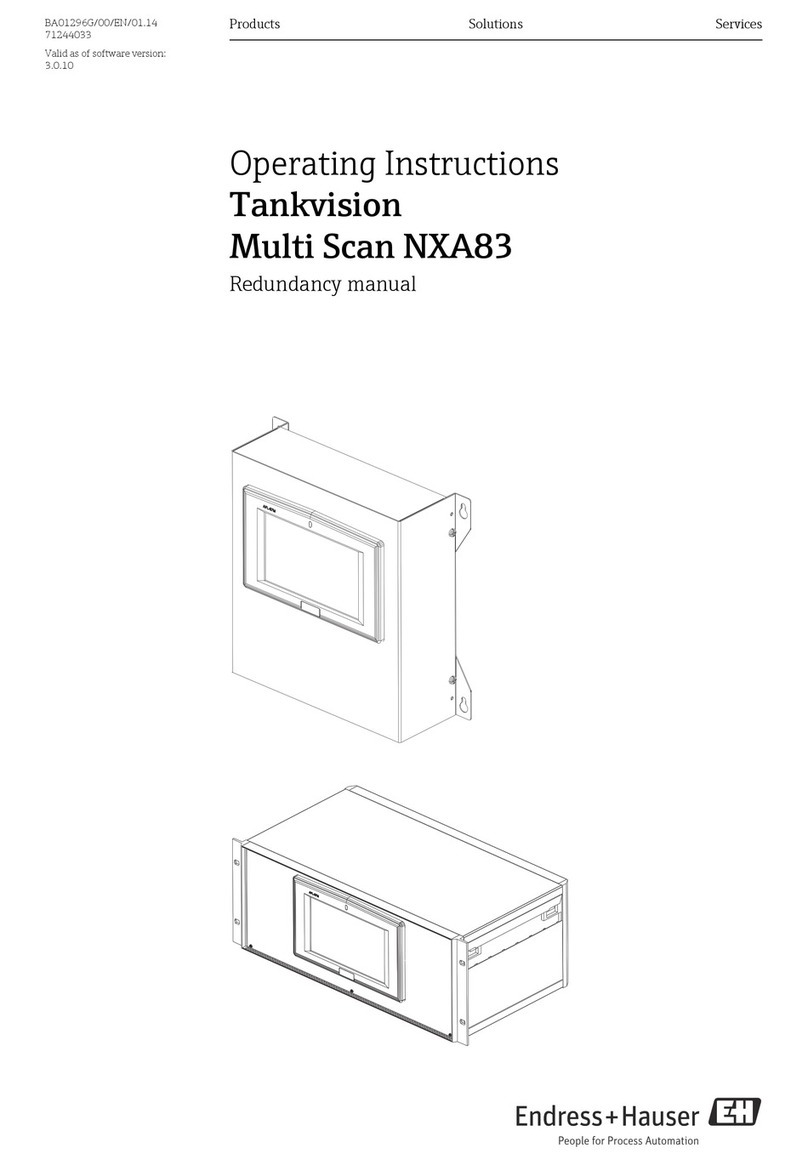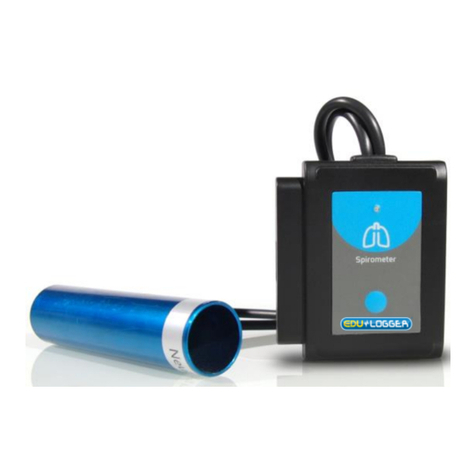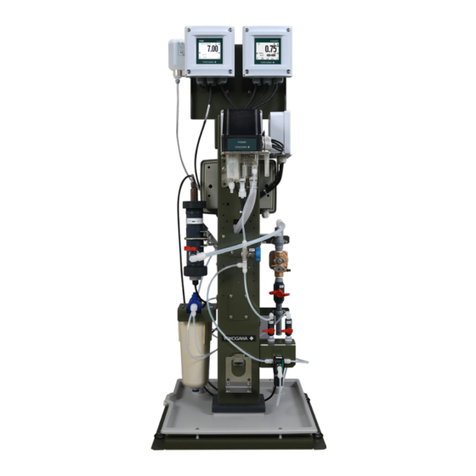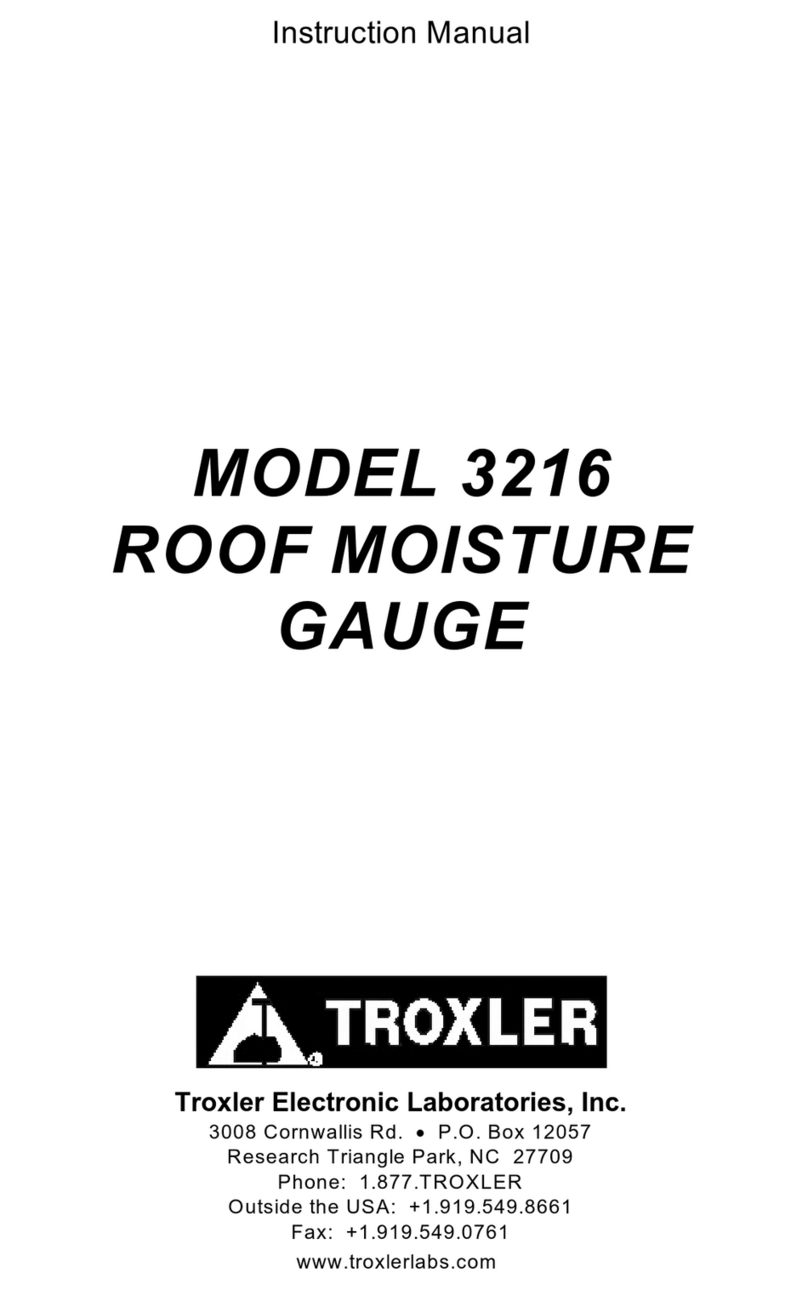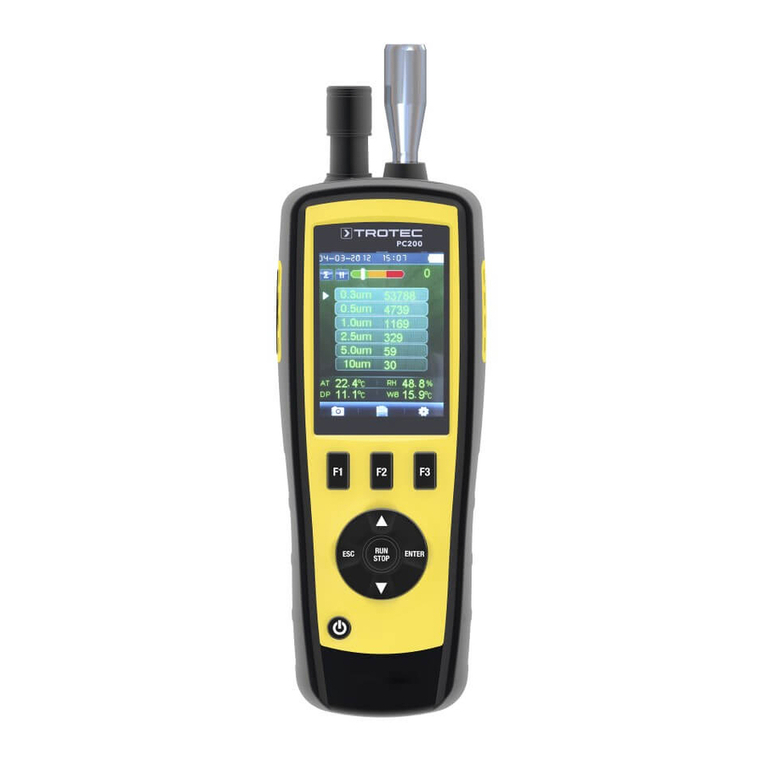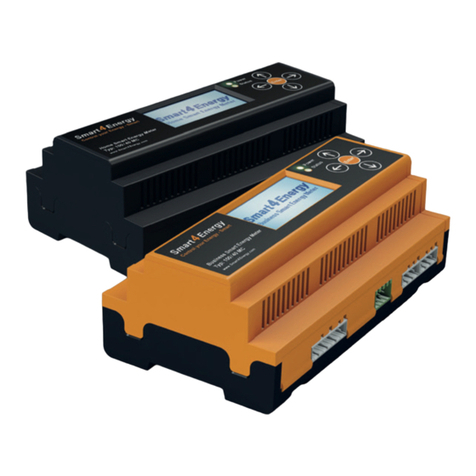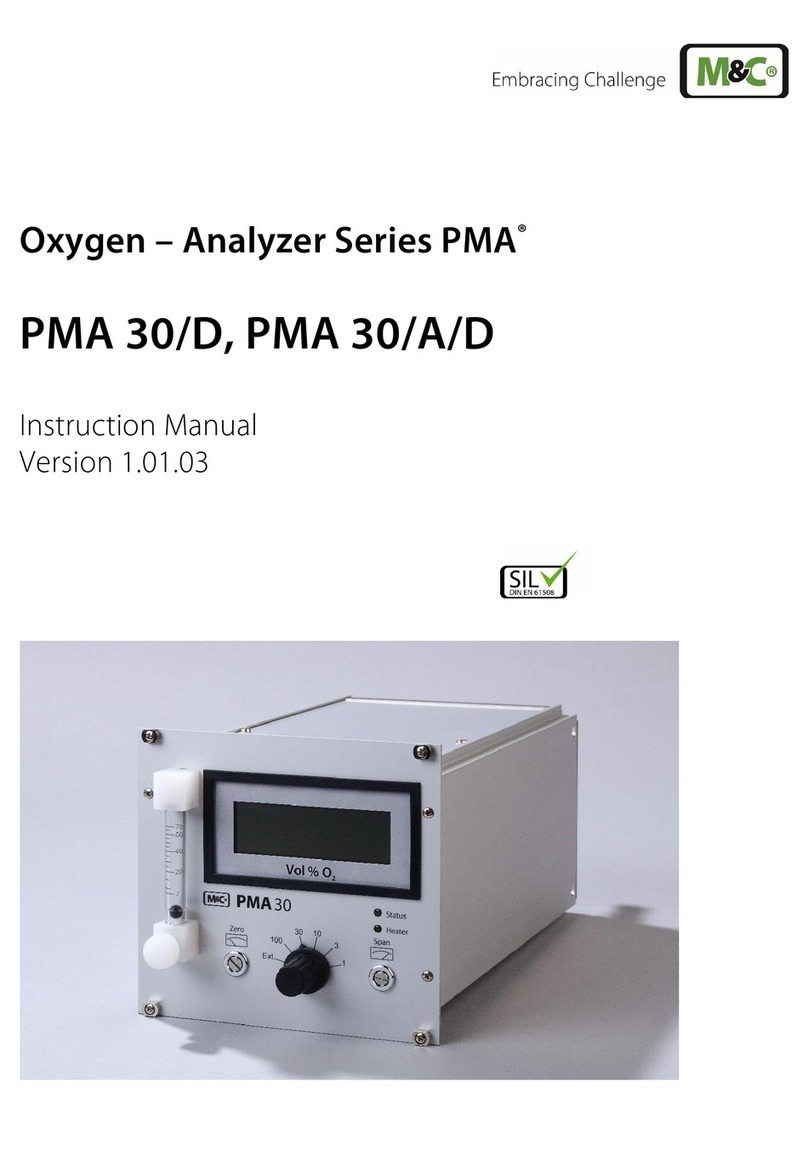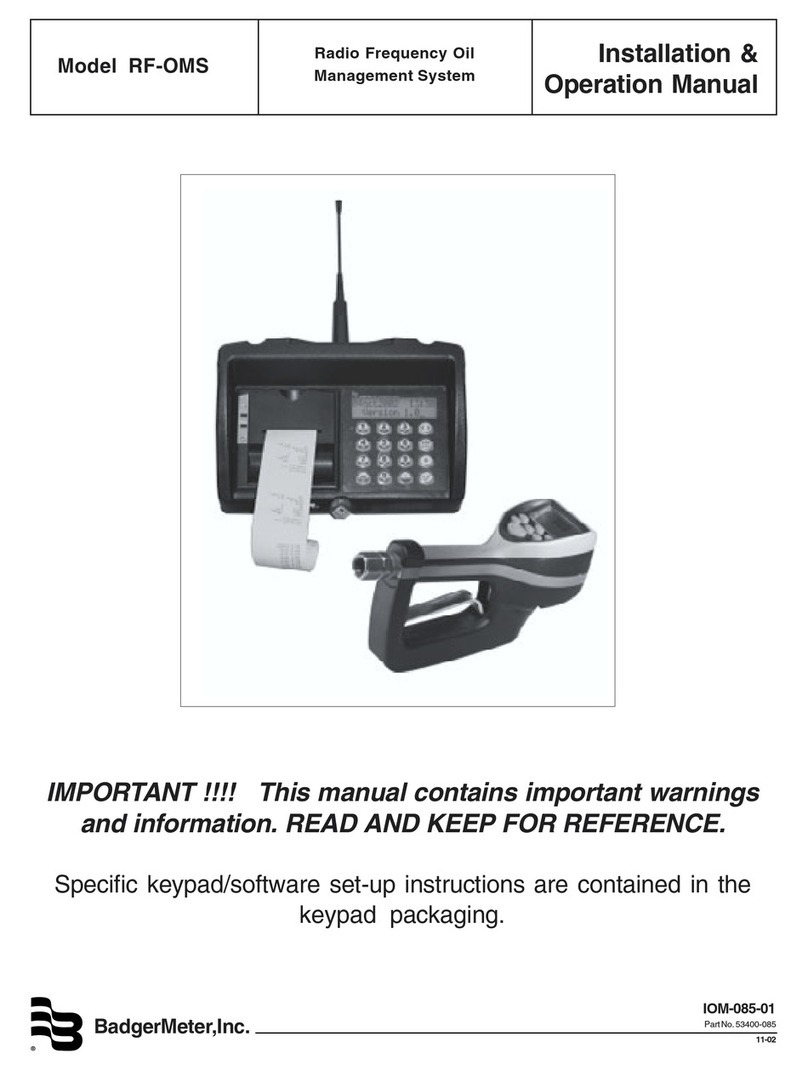field meter needs to be activated. Generally speaking, the testing follows the same principles as
described in the section "Measurement Instructions" for the fields of the power grid system. There
are only two points, which deserve special mention here:
- Usually the source of the railway currents is located outside of a house. It is recommended,
nonetheless, that the entire house is roughly checked anyway because sometimes railway fre-
quencies can also be found on, for example, water or gas piping as well as the electric wiring
system due to coupling effects. If a house to be tested is closer than 2 to 3 km to an electric
railway track, such potential sources should be checked to be on the safe side.
- "Artificial" harmonics usually are less energetic than power or railway frequencies and therefo-
re show lower testing results. For this frequency band, however, all renowned institutes recom-
mend exposure limits that are 10 times lower than those for power frequency fields. Therefore
the frequency range "200 nT/Vm" is usually sufficient.
Note: Due to 1/f higher and white noise, filter tolerances, micromovements of the instrument and
frequencies beyond the filtered frequency bands, the testing results of the position "5 Hz to 400
kHz" can deviate from the sum of the filtered values.
Frequency Analysis via AC Output
Even in a "normal" work and living environment it is possible to encounter a great variety of fre-
quencies in addition to the power frequency 60 Hz or 50 Hz, respectively. For a more detailed ana-
lysis of the different frequencies, a spectrum analyzer can be connected directly to the AC output
of the field meter by means of the supplied adapter. At the AC output a DC offset of maximum 50
mV is applied. It is standard in oscilloscopes and spectrum analyzers that this DC offset is usual-
ly suppressed by a capacitive coupling. In case the peripheral analysis instruments are connected
to the power grid including grounding conductor, the grounding of the field meter should not be
connected in order to avoid ground loops!
Following convention, the technical specifications of the field meter refer to the maximum values
given on the display, according to which the bandwidth of the AC output is limited to 30 kHz. If,
however, the measurement value is less than 1/20 of the maximum reading (e.g. in the measure-
ment range 2000 nT this would equal 100 nT), there is still a sinusoidal input signal up to 400 kHz
with a non-linearity < 1% provided at the AC output. Since the field strengths in home and work-
place settings often are in this range and not that much higher, this output can actually be used
up to 400 kHz then.
With a mono headset (adjustable volume is recommended) plugged into the AC socket, it is pos-
sible to perform a rough acoustic frequency analysis across the audible frequency range (ca. 16
Hz to 20 kHz). If needed, use adapter plug. The headset LS0002 is available as an accessory from
GIGAHERTZ SOLUTIONS®.
Data Logging via DC Output
The field strength of a given point in space often changes over a longer period of time. For a com-
plete assessment, it is recommended to monitor the field strengths (DC values), for instance, for
24 hours. Therefore the field meter comes equipped with outputs where data logging and analy-
15
© by GIGAHERTZ SOLUTIONS®GmbH, 90579 Langenzenn, www.gigahertz-solutions.com
Measurement Instructions




















